Blog Posts
Retiring my Nintendo DS Lite
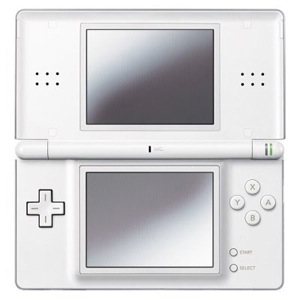 The Nintendo DS was the first game system that I followed from
announcement to launch. It was way back early 2004 that Nintendo first
hinted at a dual-screened handheld, then codenamed "Nitro." Considering
that was the only information available, it's not surprising that many
questioned Nintendo's strategy. Why two screens? Nintendo offered some
hypothetical benefits, like extra camera angles for sports games, but
their words were hardly convincing. Little did we know, it was
Nintendo's first step into the "blue ocean" strategy that would lead the
company to greener pastures.
The Nintendo DS was the first game system that I followed from
announcement to launch. It was way back early 2004 that Nintendo first
hinted at a dual-screened handheld, then codenamed "Nitro." Considering
that was the only information available, it's not surprising that many
questioned Nintendo's strategy. Why two screens? Nintendo offered some
hypothetical benefits, like extra camera angles for sports games, but
their words were hardly convincing. Little did we know, it was
Nintendo's first step into the "blue ocean" strategy that would lead the
company to greener pastures.And yet, the original DS launch in November 2004 came and went with little fanfare. I was aware of the date, but didn't even realized that it arrived until I walked through a Wal-Mart electronics section and saw the grey handheld on the shelves. I kept walking. I was Nintendo faithful, sure, but it was hard to get excited about a launch lineup headlined by something nearly a decade old. It wasn't until the impending release of Kirby Canvas Curse in the summer of 2005 that I decided to bite the bullet, trading in half of my Gamecube library to GameStop in order to pay off the Nintendo DS and one game.
While it's certainly worth praise in its own right, I think Canvas Curse deserves to be remembered as the flagship of the DS library; it was the first of a fleet of incredible games that would follow in its wake. A system redesign, dubbed the DS Lite, accompanied the platform's newfound software vigor. Reduced size, brighter screens, and an iPod aesthetic provided enough worth for many to upgrade (including me) and many more to buy in for the first time. The sleeker profile and beefier games are what truly began the success story of the best-selling handheld game system ever.
But even Nintendo's first detour in the generations-old graphical arms race would lead to a dead end eventually. With the launch of a successor, the 3DS, history tells us that the best we can hope for is a year or two of life support for what was once Nintendo's "third pillar." It was an incredible performance that none could have predicted, and I think the Nintendo DS deserves a hearty round of applause before its curtain call. I've decided to contribute to the celebration in that age-old tradition of blogging: the top ten list.
In no particular order, here are ten great games that exemplified some aspect of the Nintendo DS' legacy.
I Didn't Beat This Game: Rune Factory 2
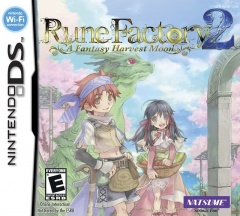 I began playing Rune Factory 2 almost 14 months ago, I enjoyed the original Rune Factory but thought there were quite a few flaws that needed to be dealt with. With the inevitable Harvest Moon sequel, I knew that I would have a chance to play their next iterations of the "fantasy Harvest Moon" series.
I began playing Rune Factory 2 almost 14 months ago, I enjoyed the original Rune Factory but thought there were quite a few flaws that needed to be dealt with. With the inevitable Harvest Moon sequel, I knew that I would have a chance to play their next iterations of the "fantasy Harvest Moon" series.Rune Factory 2 was released in late 2008 but I didn't bother picking it up until a year later, the Nintendo DS is probably my most played platform so there are a lot of games to get to. I played pretty hardcore for a month, which ultimately, probably is what did me in. I was making cash hand over fist and it wasn't even the end of the first Spring; my farming was so profitable but time-consuming that I burned myself out.
I picked up the game again a few months later and managed pretty successfully to continue where I left off: making lots of money and not actually having a lot of fun. I hate to blame myself for this though as the game readily enabled me every step of the way, but my extensive Harvest Moon knowledge and wealth of strategies certainly didn't help either.
My notes on the game have been languishing for months though, so I'd like to get my thoughts on the game out there in the wild. I'm horribly late to the party as Rune Factory 3 was released in November, but to not comment on a game I played for tens of hours seems like a travesty when I write a thousand words on games I beat in eight hours. So please note that this is not a review, but merely an observation of my experiences, there will be no score awarded for obvious reasons.
2010 Games Roundup - Nate
Greg made his 2010 games roundup a few weeks ago, so I figured I might as well follow suit. 2010 saw my most productive gaming year by a wide margin: I caught up with plenty of past hits and kept up with a lot of the newest releases as well. There's a list here for each, and you'd have to go pretty far down either to find a game I'd call "bad."
So, here they are: the 2010 games I played, the 2010 games I missed, and the old titles I caught up with. What a year it was. I doubt I'll ever get another like it, so I'm happy to recount all that it was in this post.
2010 Games Roundup
This is an addendum to our 2010 Game of the Year Awards. I wanted to write down my top games of the year in order so I could return to my year of gaming in 2010 someday and remember what I played and how much I enjoyed the games.
Not much else going on here, The First Hour will be back next Monday in full force though, see you then.
Fun Freebies: Give Up, Robot and Give Up Robot 2
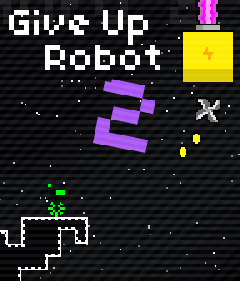 It's never been tougher to pin down just how much a game is
worth. Vanquish will last you all of five hours for its $60 entry fee,
but is it so much fun that you'll want to play it again and again?
Conversely, Fallout New Vegas offers days' worth of content to explore,
but is a buggy expansion pack really worth sixty Junior Bacon
Cheeseburgers? And why shell out full price for this year's sports title
when last year's model is nearly identical and can be bought for a
song?
It's never been tougher to pin down just how much a game is
worth. Vanquish will last you all of five hours for its $60 entry fee,
but is it so much fun that you'll want to play it again and again?
Conversely, Fallout New Vegas offers days' worth of content to explore,
but is a buggy expansion pack really worth sixty Junior Bacon
Cheeseburgers? And why shell out full price for this year's sports title
when last year's model is nearly identical and can be bought for a
song?
Thankfully, the whole discussion goes out the window when you can play the game for free. There are all kinds of browser games, smartphone apps, and free-to-play platforms out there that offer gaming goodness in exchange for nothing at all. There was a time when free Flash games were horrid experiences, not even worthy of killing time at work. But in the era of aggregate sites, app stores and user ratings, the fun freebies tend to rise to the top of the pile, where cubicle drones between TPS reports are more likely to find them.
I recently played through a few excellent little flash games at Adult Swim's website. Give Up, Robot and Give Up, Robot 2 gave me a few hours of die-and-retry platforming fun, and took nothing in return.The Worst Box Art of 2010
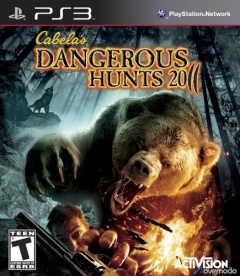 First impressions do make a difference. Here at The First Hour, reviewers examine with scrutiny the very first sixty minutes (or thirty in case of Nintendo DS carts) of a videogame, determining whether or not it properly sunk its hooks in them. Imagine if games were based solely on their box art; sometimes, depending on the buyer, they are. Box art creates an uninformed gamer’s vision in milliseconds, solidifying a buy or bust. Or possibly even befuddlement. Gaming companies, certainly at this point in the industry, know this, and yet a good number of horrific box arts are produced, effectively becoming counterproductive.
First impressions do make a difference. Here at The First Hour, reviewers examine with scrutiny the very first sixty minutes (or thirty in case of Nintendo DS carts) of a videogame, determining whether or not it properly sunk its hooks in them. Imagine if games were based solely on their box art; sometimes, depending on the buyer, they are. Box art creates an uninformed gamer’s vision in milliseconds, solidifying a buy or bust. Or possibly even befuddlement. Gaming companies, certainly at this point in the industry, know this, and yet a good number of horrific box arts are produced, effectively becoming counterproductive.So how many would truly sink versus swim? Pretty sure all of the following examples would be spending a lot of time at the bottom of the (videogame industry) ocean. Also, quick apologies to Nintendo Wii and DS fanboys as they get the bulk of bad cover boxes year after year.
Let’s hope we see no repeats like these in 2011!
WiiWare Demos! FINALLY!
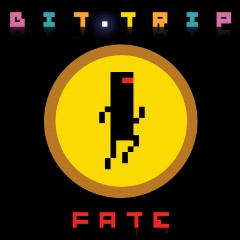 It's no secret that Nintendo is the underachiever in console features
this generation, especially in the online space. While Xbox Live and
PlayStation Network both started strong and have been continually
updated with emerging content, Wii's only online feature at launch was
the Virtual Console, and only the bare minimum has been added since then. Even now,
Wii's online service looks downright antiquated next to what Sony and
Microsoft provide. Perhaps that's why Nintendo tries its best to keep
its meager online offerings a secret.
It's no secret that Nintendo is the underachiever in console features
this generation, especially in the online space. While Xbox Live and
PlayStation Network both started strong and have been continually
updated with emerging content, Wii's only online feature at launch was
the Virtual Console, and only the bare minimum has been added since then. Even now,
Wii's online service looks downright antiquated next to what Sony and
Microsoft provide. Perhaps that's why Nintendo tries its best to keep
its meager online offerings a secret.
Case in point: game demos. Both PlayStation Network and Xbox Live offer hundreds of free, playable sneak peaks at retail and digitally distributed games. And Wii? Most of the time, that number is zero. Almost a year ago, to the day, an experimental batch of WiiWare demos were made available through the Wii Shop Channel. A few months later, they were no longer available.
A year after the experiment began, it seems Nintendo's going to start giving WiiWare the demo support it deserves...sort of. On Monday, November 22nd, Nintendo released a second batch of WiiWare demos and promised that more would be made available on Mondays. The following games are currently available: And Yet It Moves, BIT.TRIP FATE, Jett Rocket, ThruSpace, and Cave Story. If you have a Wii, you should download them all right now, though: they'll only be available for a limited time, assumedly replaced by new demos. Read on for my brief impressions of each, or head to the Wii Shop Channel and download them right now. You'll find them in the WiiWare section, under New Releases. Or you can find a Demos category when sorting by Genre.Games I am Thankful For
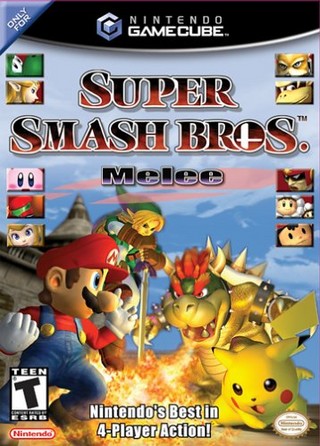 It's Thanksgiving in the U.S., and that means we take a look at our lives and consider the things we are thankful for. Family, food, and shelter immediately spring to mind when surrounded by them on this day, and then we think about friends and the time we spend together. And as gamers, nothing bring friends together better than a few good multiplayer video games.
It's Thanksgiving in the U.S., and that means we take a look at our lives and consider the things we are thankful for. Family, food, and shelter immediately spring to mind when surrounded by them on this day, and then we think about friends and the time we spend together. And as gamers, nothing bring friends together better than a few good multiplayer video games.I'd like to take a quick moment to talk about some of my favorite multiplayer games over the years and how they brought my friends together on a Friday night better than anything else.
Hope you're having a great holiday, be safe!
Killzone 3 Beta Impressions
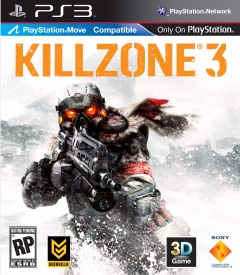 My experience with the Killzone series is rather limited. A couple
months ago, I reviewed the first hour of Killzone 2's campaign, noting
that I might keep going. I did end up running through another hour or
so, but it takes something special to keep me interested in an FPS
campaign, and Killzone 2 didn't have much of the sort. And though I
planned on giving multiplayer a try, I never got around to it.
My experience with the Killzone series is rather limited. A couple
months ago, I reviewed the first hour of Killzone 2's campaign, noting
that I might keep going. I did end up running through another hour or
so, but it takes something special to keep me interested in an FPS
campaign, and Killzone 2 didn't have much of the sort. And though I
planned on giving multiplayer a try, I never got around to it.
So when The First Hour was given a code for the Killzone 3 multiplayer beta, I wasn't sure I was the man for the job. I've never really been drawn into the world of online play in shooters -- the exception being Uncharted 2, which I played regularly for a few months when it launched -- so I don't have many comparisons to use for my experiences with the Killzone 3 beta. Luckily, I've heard plenty of commentary regarding Killzone 3 versus other shooters over the in-game voice chat that I can relay. And, surprisingly, I witnessed no personal attacks or foul-mouthed adolescents...and only one instance of a microphone being left in front of a stereo playing nothing but Madonna hits from the 80s. I guess that's a fringe benefit of a semi-private beta.
I've spent about four hours on the battlefields of Helghan, and I think I have a good enough grasp on the Killzone 3 multiplayer beta to make a report. I tried briefly looking around news sites and message boards for a comprehensive outline of the beta's features but didn't find any. With that in mind, I think I've constructed a pretty detailed outline of what's going on in Killzone 3 at the moment (at least as of Halloween, anyway).All in all, despite my indifference to the franchise and its genre before jumping in, and the brief re-introduction to dual-analog that saw many deaths and few kills in my first hour of play...I have to say, I'm enjoying the Killzone 3 experience a lot more than I thought I would thus far. Or, what little of it is available in the current beta, anyway. Hit the jump for all the details floating around in my head.
Final Fantasy XIV Beta Impressions
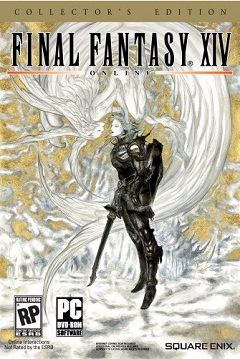 Without question, Final Fantasy XI deviated strongly from MMO
traditions and norms. In doing so, it managed to greatly polarize the
community. By moving at a slow, calculated pace throughout (even for an MMO) and
requiring players to rely on others to accomplish the most simple
goals, many players were forever turned off, including Greg and myself.
Past level 15, players required a party to do any sort of leveling.
Many damage-dealing classes were simply not wanted and sat in the main
city for hours until they could find a group, while tanks, healer and
support classes were welcomed into parties within seconds. The economy was absolutely
broken, with incredible inflation stemming from gil selling and the gap
between rich and poor players. Farming for money (outside of instanced
colliseum-style fights) consisted of sitting at rare spawn locations for
hours along with the other farmers and bots, just hoping that you manage to attack the monster before anyone else and then praying that it would drop
what you wanted. Simply put, the game had a lot of glaring problems that pushed people away.
Without question, Final Fantasy XI deviated strongly from MMO
traditions and norms. In doing so, it managed to greatly polarize the
community. By moving at a slow, calculated pace throughout (even for an MMO) and
requiring players to rely on others to accomplish the most simple
goals, many players were forever turned off, including Greg and myself.
Past level 15, players required a party to do any sort of leveling.
Many damage-dealing classes were simply not wanted and sat in the main
city for hours until they could find a group, while tanks, healer and
support classes were welcomed into parties within seconds. The economy was absolutely
broken, with incredible inflation stemming from gil selling and the gap
between rich and poor players. Farming for money (outside of instanced
colliseum-style fights) consisted of sitting at rare spawn locations for
hours along with the other farmers and bots, just hoping that you manage to attack the monster before anyone else and then praying that it would drop
what you wanted. Simply put, the game had a lot of glaring problems that pushed people away.Years after its original Japanese and subsequent North American release, FFXI began changing significantly, modifying nearly everything and adding features to appear more tempting to the average gamer, especially once under the shadow of MMORPG behemoth World of Warcraft. FFXI has always enjoyed a degree of success, as a profitable long-running MMO with a stable user base. However, it has not gained significant market share either. By hearing customer feedback for the past few years as well as observing current MMO trends, Square-Enix is surely hoping that they'll be able to grab more of that growing market with Final Fantasy XIV. But how much have things really changed? Have they fixed the basic and more complicated issues that people had with XI? I was genuinely curious and tried out the beta for just this reason. Here's what I've found...
